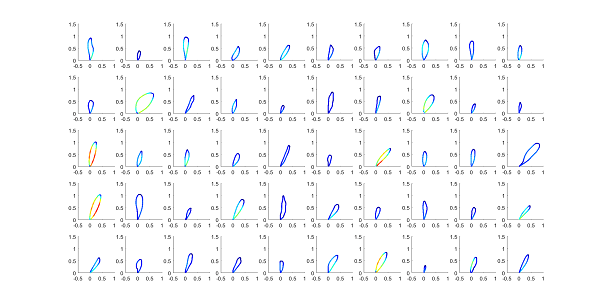
Mounîm A El-Yacoubi
University Paris Saclay, France
Title: Can handwriting analysis be helpful for Alzheimer detection?
Biography
Biography: Mounîm A El-Yacoubi
Abstract
Handwriting recognition has become, in the last two decades, a mature technology with successful applications like automatic mail sorting, bank check processing and natural interaction with mobile devices (Tablet PC, smartphones, etc.). We propose a novel technique to characterize patients with early-stage Alzheimer (ESAD) w.r.t Healthy Controls (HC) by analyzing the kinematics of online handwriting on the 4l (llll) series task (Figure 1). Our approach addresses the limits of current state of the art in several ways. Instead of comparing ESAD and HC based on global parameters (speed or acceleration average, etc.), we perform such a comparison based on the full dynamics of these kinematics parameters. To do so, we first automatically segment the 4l series into individual loops (Figure 2). To characterize the variability of loops over the two classes, we define a dictionary of prototype loops (medoids, Figure 3) by a clustering scheme based on the k-medoid algorithm, with a DTW (Dynamic Time Warping) dissimilarity measure that accommodates the sequential aspect of the loops. Each cluster thus generated consists of a set of loops pertaining to the two classes in different proportions, reflecting the cluster power in discriminating the two classes. To leverage all the loops generated by a given person in the test phase, we consider a Bayesian formalism that probabilistically aggregates the contribution of each loop before making a classification decision over the two classes (ESAD and HC). This formalism has the advantage of offering a sound mechanism for rejecting the persons with ambiguous HW, for which it is better not to make a hard automatic decision. We have tested our approach on a database acquired at Broca Hospital in Paris, from patients with ESAD and from HC, and we obtain promising results, reflected by an encouraging classification performance using the leave-one-out validation scheme.

Figure 1: Segmentation of a 4l series into individual loops.

Figure 2: Evolution over l loop of vertical speed, acceleration, and jerk, from blue (low) to red (high).

Figure 3: Medoids of the loops based on their speed dynamics.

